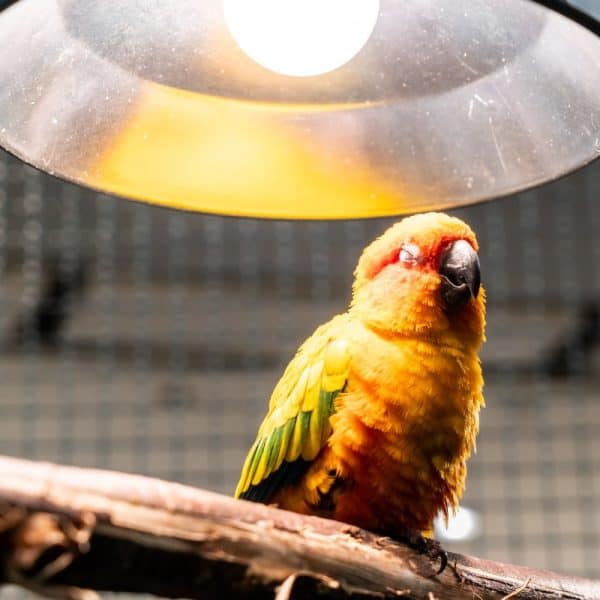Last Updated on by Mitch Rezman
Reprinted from the NCS Journal July/August 1999, Vol. XVI, No. 4
Lighting and Your Bird
by Patrick R. Thrush
Take a moment to think about your day, and where you have been. Home, work, school, shopping, dining, and other activities.
Now consider the light in each of these environments. As we go about our day to day business, very little thought is given to either the quality or source of the light which makes our routine schedules and activities possible. Simply said, it is just there.
The vast majority of the lighting we use bears little similarity to the light of the sun. While useful for the tasks we need artificial light to accomplish, common sources of illumination are lacking in many areas of the spectrum which we consider balanced or healthful. Humans, however, are very adaptable creatures.
Given proper nutrition and some exposure to the sun, health problems because of lack of natural daylight are the exception rather than the rule. Our bodies are not tied to the normal daily rhythms of sunlight; we are not creatures whose metabolisms rely on photoperiod for regulation.
This is not true for most animals, and especially birds. In the wild, animals rely on the cycling of the sun, and the seasons to adjust their biological clocks and metabolism.
It is the sun, and changes in the quality of light and length of the day which set the stage for breeding, migration, molting, and daily behavior patterns.
Birds have a highly developed sense of light. In humans, we perceive light through our eyes. Our feathered friends have an additional way of interpreting light conditions, a special gland which surrounds the eye.
This organ, called the Harderian Gland, works in combination with the light a bird receives through the eye, affecting both the pineal and pituitary glands within the brain.
These two brain glands are what regulates the growth and development of warm blooded animals. Variations in the intensity and color composition of light serve as triggers to prepare the bird for seasonal changes, and breeding behaviors. As such, light acts as an adjustment mechanism to fine tune the bird’s circadian (daily) clock.
A second consideration of sunlight concerns the health of the animal. Ultraviolet radiation works with the natural immune system, strengthening it to protect the bird against pathogens. Again, a twofold process occurs. The ultraviolet in and of itself serves to reduce surface pathogens (germs and bacteria) on the bird. In addition, the balance of light bolsters the psychological condition of an animal, meaning that it biologically “knows” the natural state of its environment, and engages in activities which are part of the rhythm world it inhabits.
Many animals also use the middle ranges of ultraviolet light to assist in synthesizing Vitamin D. In this process, the liver manufactures a chemical known as ‘precursor D’ (7-dehydrocholesterol) a “good” cholesterol.
This substance is released into the bloodstream, where exposed to the middle range of UV through surface skin and retina, becomes “previtamin D”. This is sometimes confused with D2 (calciferol), a form of the vitamin which is found in plant sources.
The natural temperature of an organism then rearranges this substance further, forming a weak D3, or cholecalciferol. This is what is generally available as a dietary supplement in bird pellets.
To become fully active as Vitamin D, the liver and the kidneys make other changes in the chemical, resulting in true Vitamin D3 (1,25-dihydroxycholecalciferol). In any warm blooded animal, once a source of calciferol or cholecalciferol is introduced, UV of any sort no longer plays a role in the synthesis.
This is evidenced by animals who are nocturnal or burrowing and receive no UV exposure, but acquire proper levels of Vitamin D from dietary sources.
The visual capabilities of birds are also quite different from the human range. We are able to see three different primary color ranges. This is referred to as trichromatic vision. In the bird, there is still another
dimension.
Birds can see well into the near ultraviolet range. It is as if a fourth primary color was presented to us. This is termed tetrachromatic vision. The addition of ultraviolet vision gives many perspectives of view that enable the bird to differentiate other birds, foods, predators, and the very direction that the light is traveling from. There is some research which indicates that this perception is used in the navigation system of birds.
We know then, that sunlight fulfills a four-fold purpose in the life of a bird: it regulates the metabolic clock and gives perception of season; its full range is almost completely used for vision; it assists in the health and sense of well being of the animal; and it provides necessary vitamin support for bone and physical development.
It is a combination of these factors which enable the bird to survive and reproduce others of its kind in the most effective and natural fashion. This is the system that is imprinted into the genetic makeup of birds.
Let us now consider the situation of the captive bird. If it is in an outdoor aviary, then no further discussion of the need for artificial lighting exists. The reality is that a great percentage of captive birds are housed in indoor environments, subject to the same poor substitute for sunlight that we humans have become accustomed to.
As such, the factors discussed in the previous paragraph are missing in the life of the bird. To make for as natural and healthful as possible an environment, the addition of artificial lighting becomes necessary. We now enter the somewhat confusing world of full spectrum (FS) lighting.
Contrary to various claims, only a fluorescent device can be full spectrum. The basic physics of incandescent bulbs prohibit them from producing a wide enough spectral range to duplicate sunlight. Certain types of bulbs, termed neodymium after the rare earth they are coated with, claim to be full spectrum. They are not. These devices merely filter out the lower red wavelengths, appearing to the human eye to ‘whiten’ the light. In decreasing these lower ranges, crucial components which are necessary to breeding and cellular activity are not provided. These lamps are neither healthful or appropriate for your birds.
For a fluorescent lamp to be properly termed full spectrum it must have a CRI (color rendition index) of greater than 90, and a Color Temperature of greater than 5000K. Any of these lamps may be used in either a 24″ or 48″ length. It is recommended to install a lamp with a CRI of 92 or greater in order to achieve the longest period of use between tube change-outs.
Due to the process of aging, lamps need be changed out approximately every 9000 hours (two years) of use for most devices. Some 24″ devices … must be changed out every year. Shifts within the output of the device have skewed them considerably away from their initial parameters. These old lamps are not useless, however. They may be used for quite some time in general home and shop illumination fixtures.
Whatever length lamp you use, it should always be in pairs. Single source fixtures simply do not provide enough light output to be truly beneficial to your bird. Whenever possible, mounting from the ceiling is the best and most natural method.
Only mount from the sides when it is impossible due to cage construction to suspend the fixture overhead. In addition, the fixture optimally can be suspended 1′-1½’ from the top of the cage. The concept of placing it closer to the cage is an artifact of reptile keeping, and is unnecessary and possibly detrimental for the captive bird.
Overhead suspension accomplishes two things. First, the light is directed downward, as it would appear in the outdoors. This ensures that your bird perceives the light as coming from a natural direction. In this manner, light direction cues are delivered consistent with what the avian brain expects to experience.
It also makes for a good saturation of light, both visible and invisible into the cage area. Objects are illuminated equally in this fashion, and are placed into proper visual perspective. Secondly, it is easier to control the intensity of light reaching cage areas. Too bright a light is not a good thing. If the area looks over-lit, it probably is. The same rules of visual comfort that apply to humans apply to your bird. Use them.
The final basic consideration of artificial lighting concerns photoperiod. It has already been noted that photoperiod adjusts the biological clock within the bird. The need for this pattern is not diminished when birds are kept indoors, or after successive generations of breeding. Therefore, providing your bird with a regular schedule of light is of great importance. This is why all lighting should be connected to a timer system. Such a setup guarantees that your bird receives the proper amount of light every day. Most keepers will note that after several weeks on a timer, the bird is able to anticipate when the light will come on, and when it will go off.
On the average, birds will require between 10-14 hours of light per day. A median for non-breeders is 12 hours. It is always best to set the timer to turn the lamp on about an hour after sunrise, and shut it off about an hour before nightfall. This enables your bird to “get up to speed” in the morning, and “wind down” at night. It also more closely matches the graduation of light throughout the day as experienced naturally.
Of course, the timer settings must be adjusted for seasonal changes in sunrise and sunset, and also for daylight savings time. If covering your bird, it is recommended to use a thin material which will transmit part of the light when it comes on. Covers should be removed soon after this time, and placed on the cage only after the light has turned off.
While most full spectrum lighting supplies sufficient middle range ultraviolet for Vitamin D synthesis, much of this wavelength is lost as the device ages. It becomes of more importance from this perspective to ensure that your bird is receiving a quality diet which supplements Vitamin D intake.
This may be confirmed by finding either calciferol or cholecalciferol listed in the ingredient list of packaged or pelletized foods. Provision of green vegetables and fish oils will assist in this process. All the lighting in the world will not offset the effect of poor diet. Do not expect any lighting source to uniformly and completely meet your bird’s Vitamin D needs.
When first using full spectrum, the amount of light produced may not seem “enough” to you when applied as directed. Beware comparing this illumination to what would be expected from a standard flourescent tube. We humans do not see as well into the blue and violet range as we possibly could, or nearly as well as our birds can. Because full spectrum lighting has a well distributed blue output, it appears as an ‘optical illusion’ to us of decreased brightness when using these tubes. You will note however that colors are more vivid, visual acuity increased, and eye fatigue reduced. Be aware that your bird sees this environment much brighter than you do.
Your bird depends on you for the majority of its needs, both physical and mental. By following the recommendations given in this article, you can rest assured that you are doing the very best to provide your companion with a balanced lighting environment.
Research indicates that light plays an important role in the longevity of captive birds. In practicing sound lighting management, you are working toward spending many more enjoyable and healthy years in the company of your feathered friend.
Author Profile

Latest entries
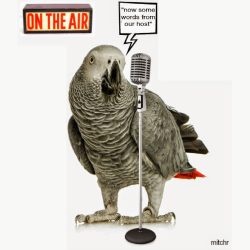 Bird & Parrot CareJune 20, 2025Understanding the Best Way to Use Prevue Pets Mimic Me Voice Trainer
Bird & Parrot CareJune 20, 2025Understanding the Best Way to Use Prevue Pets Mimic Me Voice Trainer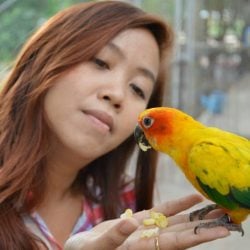 Bird BehaviorJune 6, 2025How Do I Keep My Parrot From Dumping His Food Every Day?
Bird BehaviorJune 6, 2025How Do I Keep My Parrot From Dumping His Food Every Day?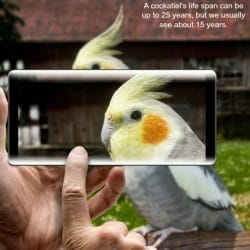 Birds & LightingMay 16, 2025I Am Seeking Clarity About Lighting for My Birds Cage
Birds & LightingMay 16, 2025I Am Seeking Clarity About Lighting for My Birds Cage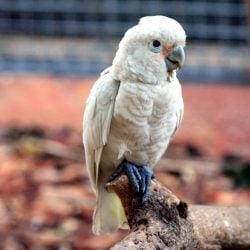 Bird RescueApril 29, 2025How Do We Re-Home a 17 yr Goffin Cockatoo?
Bird RescueApril 29, 2025How Do We Re-Home a 17 yr Goffin Cockatoo?



